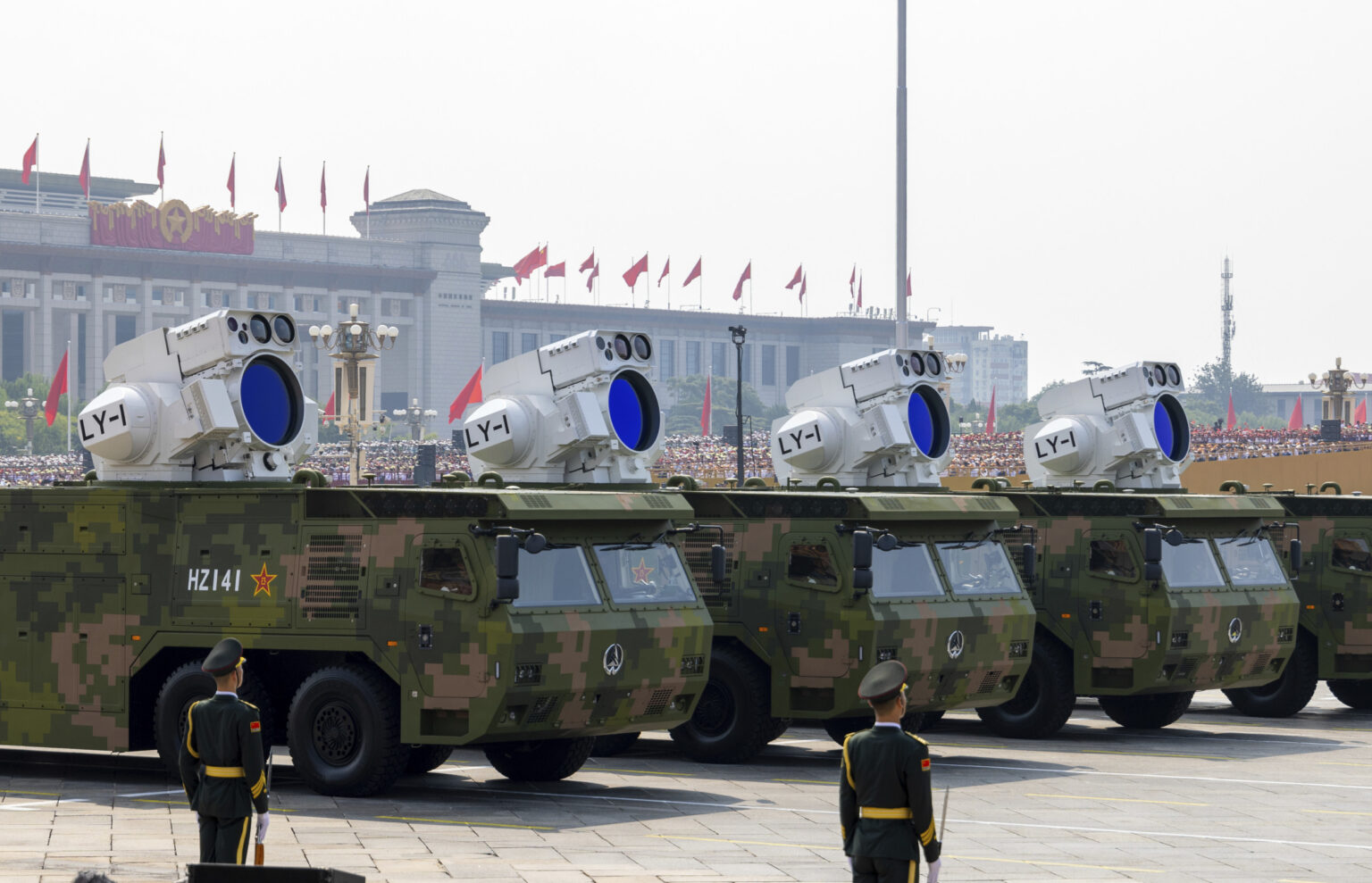Saudi Arabia’s high-tech gamble on Chinese laser weapons is faltering. In a bid to shield vital oil facilities and billion-dollar Patriot batteries from drone swarms, Riyadh turned to China’s SkyShield, one of the world’s first integrated laser-based air defense systems.
But according to Defence Blog, an independent defense and security news outlet, battlefield use has revealed that the weapon’s much-advertised promise has been blunted by desert dust, heat and Saudi Arabia’s terrain.
Newsweek has reached out to the Foreign Ministries of China and Saudi Arabia for comment.
Why It Matters
Saudi Arabia has been repeatedly targeted by drones in recent years, including the 2019 strikes on the Abqaiq and Khurais oil facilities and subsequent attacks on airports and energy infrastructure. These incidents exposed vulnerabilities in conventional air defense. The SkyShield was intended to provide a cost-effective solution by pairing electronic warfare with directed-energy weapons. Its struggles, however, show how advanced technologies can falter when moved from controlled trials into demanding real-world conditions.
What to Know
Riyadh acquired the SkyShield system to strengthen defenses against drone threats, deploying it with Chinese technical support. A former Saudi officer involved in the program told Defence Blog: “Despite the strong performance demonstrated during trials, in real conditions the SkyShield components have lower effectiveness than promised.”
Initial demonstrations had showcased the Silent Hunter laser as a precision weapon capable of destroying drones at far lower cost than launching interceptor missiles.
Photos circulating on X purport to show the system deployed in Saudi Arabia, though their authenticity has not been independently verified.
China’s SkyShield integrated counter-drone system procured by the Saudis turned out to be a Dud.
Below Par Performance in the Same conditions it was earlier trailed under.
Seems the Chinese have mastered showing one product and supplying another. pic.twitter.com/k0S3hCkk1w
— idrw (@idrwalerts) September 4, 2025
How SkyShield Works
SkyShield’s layered defense combines detection, jamming and destruction. Each battery includes a 3D TWA Radar, a 360-degree AESA counter-drone radar, two JN1101 jamming vehicles capable of electronic warfare and interception, and the Silent Hunter Laser Directed-Energy Weapon developed by China Electronics Technology Group Corporation (CETC). The system’s radars feed targeting data to the jammers and laser, creating a networked counter-drone shield.
Failures in Harsh Conditions
The Silent Hunter has struggled in Saudi Arabia’s desert environment. Dust and sandstorms have disrupted optical tracking, weakened the laser beam and caused wear on its optics. High temperatures forced the system to divert much of its energy into cooling instead of firing. In some cases, neutralizing a single drone required 15 to 30 minutes of continuous laser targeting—too long for fast-moving threats.
Deployment Delays
The laser module, housed in a truck-mounted container, demands lengthy setup times, slowing its transition from standby to combat readiness. In addition, its need for long, unobstructed sight lines have limited deployment options across much Saudi terrain.
By contrast, the JN1101 jamming vehicles performed more consistently, neutralizing the majority of drones that entered the system’s defended zones.
What Happens Next
Saudi Arabia has pressed China to adapt SkyShield for desert use, but until improvements are made, electronic jamming remains its most dependable line of defense while lasers remain largely a technological experiment on the battlefield.
Read the full article here


